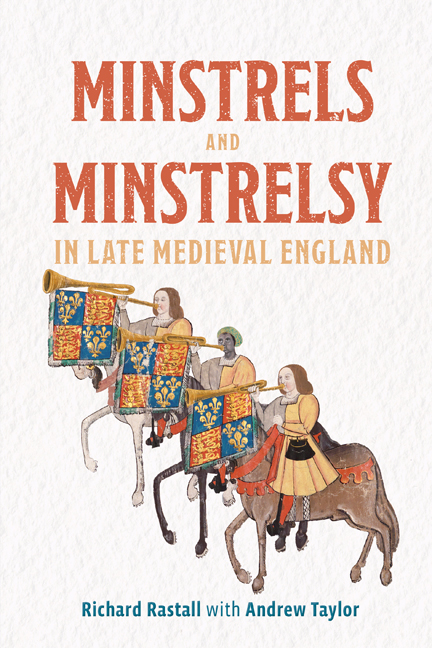Book contents
- Frontmatter
- Dedication
- Contents
- List of illustrations
- List of music examples
- List of abbreviations
- A note on references
- A note on money
- A note on dates
- Preface
- Acknowledgments
- Part I Minstrels and Minstrelsy in the Elite Households
- Part II Urban Minstrelsy
- Part III On the Road
- Part IV Minstrel Performance
- Envoi
- Bibliography
- Index
9 - Minstrel itineraries
Published online by Cambridge University Press: 09 January 2024
- Frontmatter
- Dedication
- Contents
- List of illustrations
- List of music examples
- List of abbreviations
- A note on references
- A note on money
- A note on dates
- Preface
- Acknowledgments
- Part I Minstrels and Minstrelsy in the Elite Households
- Part II Urban Minstrelsy
- Part III On the Road
- Part IV Minstrel Performance
- Envoi
- Bibliography
- Index
Summary
Minstrel circuits?
Since the 1960s and 70s, when scholars have been editing records of drama and other entertainments in a concentrated fashion, it has been suggested occasionally that players followed ‘circuits’ – well-known itineraries that could be repeated year after year and which presumably offered more or less assured rewards. Giles Dawson made the claim in 1965,1 and subsequently several REED editors have proposed the same: but on the whole they have shown some caution, because the records do not provide firm proof. But the accumulation of hints has been enough to give the editors the feeling that known circuits must have existed. Not surprisingly, but to be treated with equal caution, the records of itinerant minstrelsy, too, have given the impression that regular itineraries might have been followed.
There are good reasons for this provisional conclusion. If a minstrel travelled a large distance – say, to York from the Court at Westminster – the necessity for speed might demand the best road: in this case, the main road north. The journey would almost certainly not be entirely along the main road, however, for several circumstances would require a detour. The first would be the need for an evening meal and lodging for the night, which might be obtained in either a secular or a religious household. The Warwick household books (discussed in Chapter 5) show hospitality being offered to minstrels travelling independently, and such hospitality was also an obligation of conventual houses. The accommodation might be a small, bare guest-room in a priory, but more likely a straw palliasse in a dormitory or a pile of hay in a barn. In a secular household it could mean dossing down in a corner of the hall. The standard of accommodation might depend on the status of the minstrel's employer. What we can be sure of is that the minstrel would take the opportunity to earn some money by performing for his host if he could.
Another reason for leaving the highway would be the occasion of a fair, or of a patronal or other festival at a religious house. If the minstrels were in no particular hurry any lucrative detour would be an attractive proposition. One therefore looks for evidence of minstrel activity in groups of small places connected by relatively minor roads.
- Type
- Chapter
- Information
- Minstrels and Minstrelsy in Late Medieval England , pp. 183 - 197Publisher: Boydell & BrewerPrint publication year: 2023

